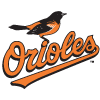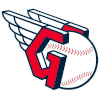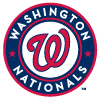This article is part of our MLB Barometer series.
We're roughly 35 games through the season, and it's rather refreshing after last year to realize that means that we aren't even at the one-quarter mark of the campaign. While sample sizes remain small, it's still a meaningful amount of data to look at. Mike Trout is atop the WAR leaderboard, after all, which marks the unofficial point at which stats become trustworthy.
One thing that having a useful sample of 2021 numbers does for us is that it gives us more context for some of 2020's stranger lines. It was a very common theme during draft season to hear something along the lines of, "Yes, he was bad last year, but if the season were longer than 60 games, who's to say he wouldn't have pulled out of that slump?" Those questions are starting to get answered.
The first month-plus of this season serves as a useful proxy of what games 61 through 95 last year could have looked like. Of course, it's not a perfect method. Players' true talent levels do change over the offseason, as they have time to rest and recover from injuries, work on new pitches or alter their swings. It's certainly not unheard of for a player to arrive at camp as effectively a different guy than he was the year prior.
While those exceptions do exist, and the 95 games that span from last year's Opening Day to today may not quite be as useful as a 95-game stretch within a given season,
We're roughly 35 games through the season, and it's rather refreshing after last year to realize that means that we aren't even at the one-quarter mark of the campaign. While sample sizes remain small, it's still a meaningful amount of data to look at. Mike Trout is atop the WAR leaderboard, after all, which marks the unofficial point at which stats become trustworthy.
One thing that having a useful sample of 2021 numbers does for us is that it gives us more context for some of 2020's stranger lines. It was a very common theme during draft season to hear something along the lines of, "Yes, he was bad last year, but if the season were longer than 60 games, who's to say he wouldn't have pulled out of that slump?" Those questions are starting to get answered.
The first month-plus of this season serves as a useful proxy of what games 61 through 95 last year could have looked like. Of course, it's not a perfect method. Players' true talent levels do change over the offseason, as they have time to rest and recover from injuries, work on new pitches or alter their swings. It's certainly not unheard of for a player to arrive at camp as effectively a different guy than he was the year prior.
While those exceptions do exist, and the 95 games that span from last year's Opening Day to today may not quite be as useful as a 95-game stretch within a given season, it's not as if reacting to noteworthy performances that stretch over parts of two years is a novel concept. Just think about how you'd react to a player who was cold in the final 60 games of a normal season and then cold the following April, for example. This week's Fallers will contain a pair of players who fit that description, and it's worth keeping an eye out over the next few weeks for players who look to be proving that the new levels they reached last year did indeed represent a shift in talent rather than a mere small-sample blip.
Risers
 Giancarlo Stanton, DH, Yankees: It's not hard to understand why Stanton wasn't a top-100 pick this offseason. He's infamously injury-prone at this point of his career, appearing in just 41 games combined over the last two seasons. One might assume that all those injuries would have taken enough of a toll on his body that his skills have diminished, but he's done everything he can through his first 30 games this season to prove that isn't the case, hitting .292/.356/.558 with nine homers, one shy of the league lead. He's making as much contact as ever, as his 26.5 percent strikeout rate is the second-best mark of his 12-year career, and his contact quality is as good as ever. His hard-hit rate of 64.7 percent is 5.5 points above everyone else in the league. It's impossible to say how many games we'll get Stanton for this season, but it looks like we'll still be getting peak Stanton for as long as he can stay on the field.
Giancarlo Stanton, DH, Yankees: It's not hard to understand why Stanton wasn't a top-100 pick this offseason. He's infamously injury-prone at this point of his career, appearing in just 41 games combined over the last two seasons. One might assume that all those injuries would have taken enough of a toll on his body that his skills have diminished, but he's done everything he can through his first 30 games this season to prove that isn't the case, hitting .292/.356/.558 with nine homers, one shy of the league lead. He's making as much contact as ever, as his 26.5 percent strikeout rate is the second-best mark of his 12-year career, and his contact quality is as good as ever. His hard-hit rate of 64.7 percent is 5.5 points above everyone else in the league. It's impossible to say how many games we'll get Stanton for this season, but it looks like we'll still be getting peak Stanton for as long as he can stay on the field.
 John Means, SP, Orioles: Fantasy players and major-league teams alike are frequently drawn toward pitchers with great stuff and shaky control, on the theory that those players could develop into elite arms if they eventually learn where the ball is going. Means can't single-handedly prove that's the wrong way to go, but he's doing everything he can this year to prove that control guys can also develop into all-around dominant pitchers. Heading into this season, he had a perfectly respectable 3.97 ERA, with his 5.4 percent walk rate offsetting a 20.1 percent strikeout rate. This season, his strikeout rate has spiked to 30.1 percent while his walk rate has barely changed, leading to a 1.37 ERA and a no-hitter against the Mariners in his latest outing. He won't keep his ERA quite that low, but his 3.00 FIP and 3.47 xFIP indicate that this is indeed a new level for the lefty. His low 35.8 percent groundball rate means he'll have some starts where he gives up a handful of homers, especially at the Orioles' hitter-friendly home park, but the increased strikeouts (which are backed by an increase in swinging strike rate from 12.5 percent to 15.7 percent) give him a path to fantasy value even during those outings.
John Means, SP, Orioles: Fantasy players and major-league teams alike are frequently drawn toward pitchers with great stuff and shaky control, on the theory that those players could develop into elite arms if they eventually learn where the ball is going. Means can't single-handedly prove that's the wrong way to go, but he's doing everything he can this year to prove that control guys can also develop into all-around dominant pitchers. Heading into this season, he had a perfectly respectable 3.97 ERA, with his 5.4 percent walk rate offsetting a 20.1 percent strikeout rate. This season, his strikeout rate has spiked to 30.1 percent while his walk rate has barely changed, leading to a 1.37 ERA and a no-hitter against the Mariners in his latest outing. He won't keep his ERA quite that low, but his 3.00 FIP and 3.47 xFIP indicate that this is indeed a new level for the lefty. His low 35.8 percent groundball rate means he'll have some starts where he gives up a handful of homers, especially at the Orioles' hitter-friendly home park, but the increased strikeouts (which are backed by an increase in swinging strike rate from 12.5 percent to 15.7 percent) give him a path to fantasy value even during those outings.
 Wander Franco, SS, Rays: It's very rare (it may even be unprecedented) that I feature a player who's yet to make his big-league debut in this column, but Franco is a very rare player. Last year's canceled minor-league season robbed him of the chance to continue advancing up the ladder, but what he showed in 175 games in 2018 and 2019 is hard to overstate. He hit .336/.405/.523 with 20 homers and 22 steals while showing incredible control of the zone, walking 10.8 percent of the time to go with just a 7.0 percent strikeout rate. All of that came while he was no older than 18, with the majority of the games coming at the full-season level. The Rays jumped him to Triple-A this season, and with the deadline to secure an extra year of team control already in the rearview mirror, the team has little reason to keep him in the minors if his incredible numbers continue into this year. Through five games, there's every indication they will, as he's hitting .304/.385/.696 with a pair of homers. Franco may not be an all-around hitter right away once he arrives, but he should already be a great contact hitter who contributes in other categories as well. It's not clear exactly when he'll arrive, but he's about to get snapped up quickly wherever he's still available, so if you want him, now is the time to get him.
Wander Franco, SS, Rays: It's very rare (it may even be unprecedented) that I feature a player who's yet to make his big-league debut in this column, but Franco is a very rare player. Last year's canceled minor-league season robbed him of the chance to continue advancing up the ladder, but what he showed in 175 games in 2018 and 2019 is hard to overstate. He hit .336/.405/.523 with 20 homers and 22 steals while showing incredible control of the zone, walking 10.8 percent of the time to go with just a 7.0 percent strikeout rate. All of that came while he was no older than 18, with the majority of the games coming at the full-season level. The Rays jumped him to Triple-A this season, and with the deadline to secure an extra year of team control already in the rearview mirror, the team has little reason to keep him in the minors if his incredible numbers continue into this year. Through five games, there's every indication they will, as he's hitting .304/.385/.696 with a pair of homers. Franco may not be an all-around hitter right away once he arrives, but he should already be a great contact hitter who contributes in other categories as well. It's not clear exactly when he'll arrive, but he's about to get snapped up quickly wherever he's still available, so if you want him, now is the time to get him.
 JT Brubaker, SP, Pirates: Brubaker made for an interesting sleeper during draft season, coming off a solid but rather underhyped rookie campaign, and he was effectively free, falling outside the top 500 in NFBC drafts. His 4.94 ERA in 47.1 innings (nine starts and two relief appearances) was nothing to write home about, but all three of his strikeout, walk and groundball rates were league average or better. He didn't beat any of those marks by a significant amount, but showing such a well-rounded game is rare – only 17 other pitchers who threw at least as many innings last year achieved the same feat. He's well on his way to doing the same this season, albeit with significant improvements in all three categories. His strikeout rate has jumped from 23.4 percent to 26.8 percent, his walk rate has fallen from 8.3 percent to 5.8 percent, and his groundball rate has risen from 46.7 percent to 57.0 percent. That's led to a 2.78 ERA, which only looks like a slight overachievement given his 3.12 xFIP.
JT Brubaker, SP, Pirates: Brubaker made for an interesting sleeper during draft season, coming off a solid but rather underhyped rookie campaign, and he was effectively free, falling outside the top 500 in NFBC drafts. His 4.94 ERA in 47.1 innings (nine starts and two relief appearances) was nothing to write home about, but all three of his strikeout, walk and groundball rates were league average or better. He didn't beat any of those marks by a significant amount, but showing such a well-rounded game is rare – only 17 other pitchers who threw at least as many innings last year achieved the same feat. He's well on his way to doing the same this season, albeit with significant improvements in all three categories. His strikeout rate has jumped from 23.4 percent to 26.8 percent, his walk rate has fallen from 8.3 percent to 5.8 percent, and his groundball rate has risen from 46.7 percent to 57.0 percent. That's led to a 2.78 ERA, which only looks like a slight overachievement given his 3.12 xFIP.
 Tyler Anderson, SP, Pirates: Brubaker's teammate Anderson was even more of an afterthought during draft season, going undrafted in just shy of 80 percent of NFBC drafts, and it's not hard to see why. He'd recorded a 5.02 ERA over the previous four seasons and was coming off a career low in strikeout rate (15.8 percent) and groundball rate (28.5 percent). He's looked like an entirely different pitcher through seven starts this season, however. His 22.5 percent strikeout rate hardly turns heads but represents a career high, while his 7.3 percent walk rate is his best mark since 2017. His 43.4 percent groundball rate also stands as his best mark since that season. The veteran lefty isn't a league winner, but his all-around competence and pitcher-friendly home park make him a useful option to round out almost any staff.
Tyler Anderson, SP, Pirates: Brubaker's teammate Anderson was even more of an afterthought during draft season, going undrafted in just shy of 80 percent of NFBC drafts, and it's not hard to see why. He'd recorded a 5.02 ERA over the previous four seasons and was coming off a career low in strikeout rate (15.8 percent) and groundball rate (28.5 percent). He's looked like an entirely different pitcher through seven starts this season, however. His 22.5 percent strikeout rate hardly turns heads but represents a career high, while his 7.3 percent walk rate is his best mark since 2017. His 43.4 percent groundball rate also stands as his best mark since that season. The veteran lefty isn't a league winner, but his all-around competence and pitcher-friendly home park make him a useful option to round out almost any staff.
Fallers
 Andres Gimenez, 2B/3B/SS, Cleveland: Gimenez' stock soared during draft season following the news that Amed Rosario would be working out in the outfield, as playing-time questions were seemingly the only thing standing between Gimenez and a very strong season after he showed plenty of speed to go with competent numbers at the plate as a rookie. While he has indeed received plenty of playing time, starting against every righty as well as a handful of lefties, the performances haven't been there at all, to the point where it's fair to wonder if he might get demoted soon. After posting an OPS of .286 over his last 12 games, his season slash line now sits at an anemic .183/.224/.324. He's striking out 29.9 percent of the time while walking at just a 3.9 percent clip, and when he does manage to hit the ball, he's not hitting it hard, as his .206 xBA indicates he's barely getting unlucky. He's at least stolen three bases, but he won't steal many more if his bat isn't good enough to keep him in the lineup.
Andres Gimenez, 2B/3B/SS, Cleveland: Gimenez' stock soared during draft season following the news that Amed Rosario would be working out in the outfield, as playing-time questions were seemingly the only thing standing between Gimenez and a very strong season after he showed plenty of speed to go with competent numbers at the plate as a rookie. While he has indeed received plenty of playing time, starting against every righty as well as a handful of lefties, the performances haven't been there at all, to the point where it's fair to wonder if he might get demoted soon. After posting an OPS of .286 over his last 12 games, his season slash line now sits at an anemic .183/.224/.324. He's striking out 29.9 percent of the time while walking at just a 3.9 percent clip, and when he does manage to hit the ball, he's not hitting it hard, as his .206 xBA indicates he's barely getting unlucky. He's at least stolen three bases, but he won't steal many more if his bat isn't good enough to keep him in the lineup.
 Triston McKenzie, SP, Cleveland: There were plenty of reasons to like McKenzie heading into the season, as his 3.24 ERA in his 33.1-inning debut last season was well-supported by his peripherals, including a very impressive 33.1 percent strikeout rate and a 7.1 percent walk rate. Through five starts and one relief appearance this season, his strikeout rate remains excellent at 32.1 percent, but everything else looks very shaky. His walk rate has ballooned to 20.8 percent, while his groundball rate has cratered to 16.3 percent. Both those marks are the worst among pitchers who have thrown at least 20 innings this year, and it isn't particularly close. They've led to a 4.94 ERA and 1.61 WHIP, and those numbers could be even worse according to his 5.77 FIP and 5.68 xERA. There's definitely still something here with McKenzie, especially as he's still just 23, but the red flags could hardly be brighter.
Triston McKenzie, SP, Cleveland: There were plenty of reasons to like McKenzie heading into the season, as his 3.24 ERA in his 33.1-inning debut last season was well-supported by his peripherals, including a very impressive 33.1 percent strikeout rate and a 7.1 percent walk rate. Through five starts and one relief appearance this season, his strikeout rate remains excellent at 32.1 percent, but everything else looks very shaky. His walk rate has ballooned to 20.8 percent, while his groundball rate has cratered to 16.3 percent. Both those marks are the worst among pitchers who have thrown at least 20 innings this year, and it isn't particularly close. They've led to a 4.94 ERA and 1.61 WHIP, and those numbers could be even worse according to his 5.77 FIP and 5.68 xERA. There's definitely still something here with McKenzie, especially as he's still just 23, but the red flags could hardly be brighter.
 Eugenio Suarez, SS/3B, Reds: Suarez had a down season last year, as his .202/312/.470 line was good for a modest 104 wRC+, his worst mark since 2016. Drafters didn't penalize him much for it over the offseason, as he finished with an NFBC ADP of 67.4, and it's not hard to see why. His power was still there, and some positive regression in his .214 BABIP would seemingly bring him back to his peak numbers. The opposite has happened this year, however. He's fallen off a cliff in just about every conceivable way, hitting .130/.223/.296. A .156 BABIP is certainly part of the story, but Statcast isn't remotely convinced about the quality of his contact, giving him a .169 xBA and .367 xSLG thanks to a career-low 27.5 percent hard-hit rate. He's also striking out 36.2 percent of the time, more than 10 points above his career average.
Eugenio Suarez, SS/3B, Reds: Suarez had a down season last year, as his .202/312/.470 line was good for a modest 104 wRC+, his worst mark since 2016. Drafters didn't penalize him much for it over the offseason, as he finished with an NFBC ADP of 67.4, and it's not hard to see why. His power was still there, and some positive regression in his .214 BABIP would seemingly bring him back to his peak numbers. The opposite has happened this year, however. He's fallen off a cliff in just about every conceivable way, hitting .130/.223/.296. A .156 BABIP is certainly part of the story, but Statcast isn't remotely convinced about the quality of his contact, giving him a .169 xBA and .367 xSLG thanks to a career-low 27.5 percent hard-hit rate. He's also striking out 36.2 percent of the time, more than 10 points above his career average.
 Josh Bell, 1B, Nationals: Like Suarez, Bell is coming off a down 2020 season. After hitting .265/.354/.477 over his first four seasons, he stumbled to a .226/.305/.364 mark last year. A spike in his strikeout rate from 18.2 percent through 2019 to 26.5 percent last year was a large part of the problem. Just as with Suarez, that problem no longer seems like a one-year blip, as his whiffs have only gotten worse this year. His strikeout rate has taken another jump up to 30.2 percent, and it's taken a bite out of his slash line with it, which now sits at a miserable .141/.209/.308. The good news for Bell compared to Suarez is that his contact is at least good when he does manage to hit the ball. His career-best 52.8 percent hard-hit rate has helped him to a .235 xBA and .452 xSLG, so it looks like his .160 BABIP is responsible for a fair portion of his struggles. Still, it's a worrisome start for Bell, as he isn't an elite power hitter and can't necessarily sustain strikeout rates north of 30 percent if he's to hit well enough to be an everyday first baseman.
Josh Bell, 1B, Nationals: Like Suarez, Bell is coming off a down 2020 season. After hitting .265/.354/.477 over his first four seasons, he stumbled to a .226/.305/.364 mark last year. A spike in his strikeout rate from 18.2 percent through 2019 to 26.5 percent last year was a large part of the problem. Just as with Suarez, that problem no longer seems like a one-year blip, as his whiffs have only gotten worse this year. His strikeout rate has taken another jump up to 30.2 percent, and it's taken a bite out of his slash line with it, which now sits at a miserable .141/.209/.308. The good news for Bell compared to Suarez is that his contact is at least good when he does manage to hit the ball. His career-best 52.8 percent hard-hit rate has helped him to a .235 xBA and .452 xSLG, so it looks like his .160 BABIP is responsible for a fair portion of his struggles. Still, it's a worrisome start for Bell, as he isn't an elite power hitter and can't necessarily sustain strikeout rates north of 30 percent if he's to hit well enough to be an everyday first baseman.
 Drew Smyly, SP, Atlanta: Smyly was a guy I was personally quite high on during draft season based primarily on his 37.8 percent strikeout rate last year. That came in a tiny sample of just 26.1 innings, but he had a long way to fall in that category while still getting plenty of whiffs to go along with all-around solid numbers. He could lose 10 percentage points while still being quite an interesting arm at his modest price. No pitcher is going to have a good season if his strikeout rate drops by more than 18 points, however, and that's exactly what's happened to Smyly, who's striking out a career-low 19.6 percent of opposing batters through five starts. The rest of his line is poor as well, as his 9.8 percent walk rate and 32.1 percent groundball rate are both his second-worst mark. It's no surprise to see his ERA all the way up at 6.12. It's still early enough that he could recapture at least some of last season's magic, but at 31 years old and with a pretty unappealing track record in most of his recent seasons, he may not be worth waiting around for in most formats.
Drew Smyly, SP, Atlanta: Smyly was a guy I was personally quite high on during draft season based primarily on his 37.8 percent strikeout rate last year. That came in a tiny sample of just 26.1 innings, but he had a long way to fall in that category while still getting plenty of whiffs to go along with all-around solid numbers. He could lose 10 percentage points while still being quite an interesting arm at his modest price. No pitcher is going to have a good season if his strikeout rate drops by more than 18 points, however, and that's exactly what's happened to Smyly, who's striking out a career-low 19.6 percent of opposing batters through five starts. The rest of his line is poor as well, as his 9.8 percent walk rate and 32.1 percent groundball rate are both his second-worst mark. It's no surprise to see his ERA all the way up at 6.12. It's still early enough that he could recapture at least some of last season's magic, but at 31 years old and with a pretty unappealing track record in most of his recent seasons, he may not be worth waiting around for in most formats.










